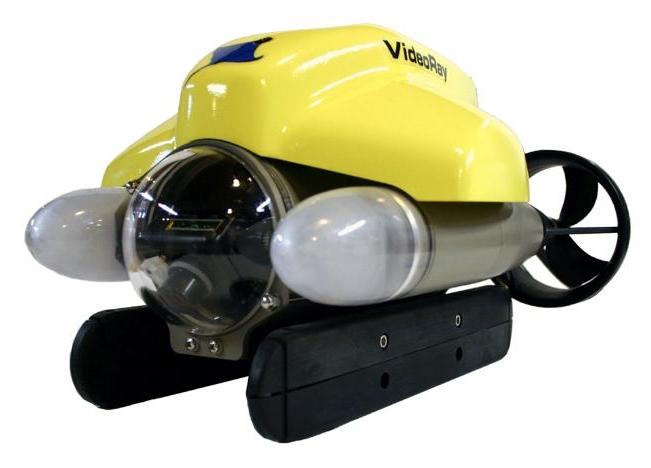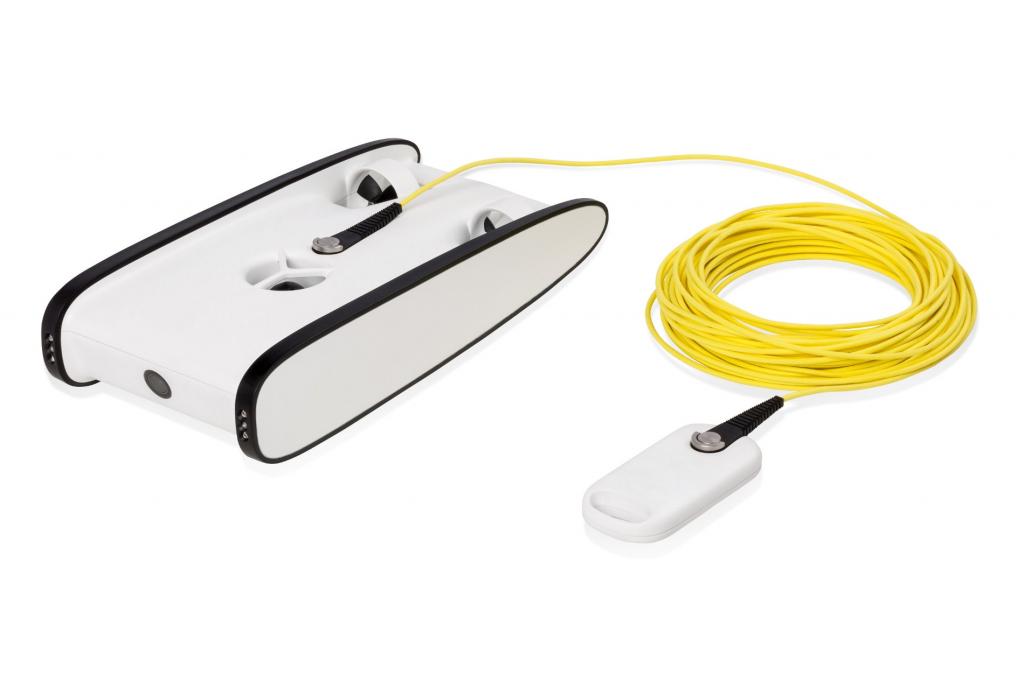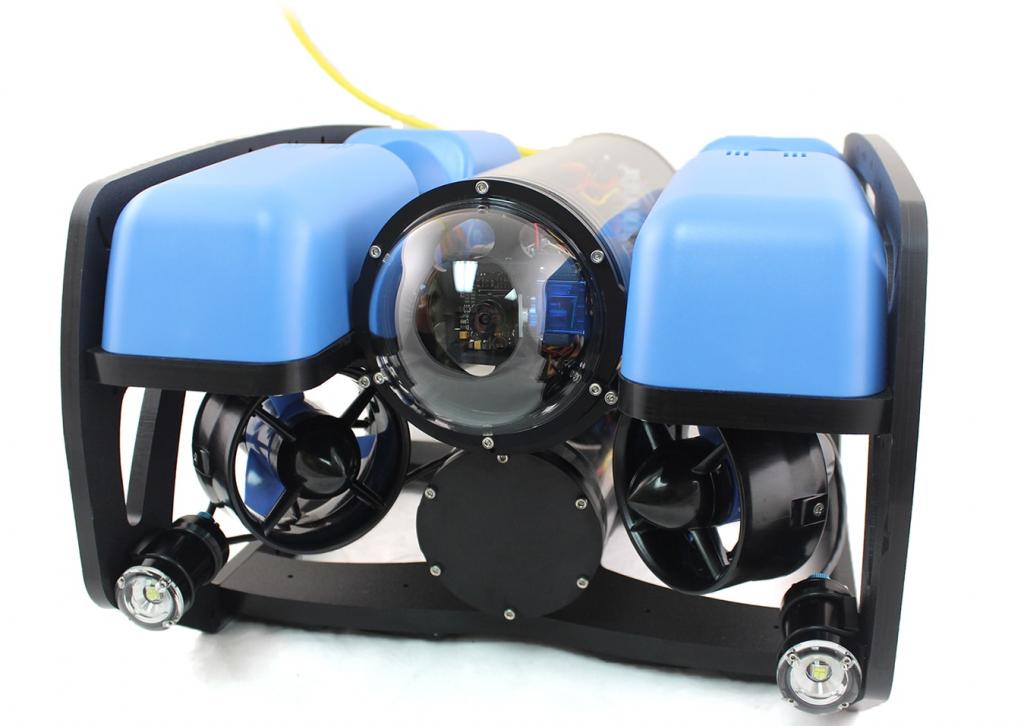Ten of the Best Educational ROVs
Do you like to explore and learn about our world? With 71% of the earth being covered by water, it’s about time to start learning about that 71%!
Teaching basic marine biology and marine geology can be very rewarding and a lot of fun if it’s not always out of a book that is. Field trips don’t always have to be limited to museums and aquariums either. You can learn about these things in real time with a remotely operated vehicle (ROV). These high tech tethered underwater robots can also be used to explore historical ship wrecks and other manmade objects. They all come with underwater cameras and thrusters to maneuver them around, but which ROV is the best for educational use?
Five factors were used to rate the ROVs that made this list. They had to be easy to use and maintain with a low initial purchase price. That means that there had to be an option to add equipment afterward. They also had to be able to dive deep enough to explore our undersea world. That takes a certain degree of skill to control them too.
Complicated controls and finicky software bugs can keep teachers and students from enjoying hands on learning. Along with these teaching handicaps comes some ROVs with limited display functions. Poor displays can also affect teaching efficiency. A single ROV pilot inspecting an underwater pipeline may only need a simple display. If you’re attempting to show a classroom full of students the dive, then more easily adaptable displays with multiple data readouts might be better suited. Then you can start adding even more readouts by adding more sensors.
Expandability was considered instead of packaged features, because multiple features in an ROV drives up the initial cost considerably. That would skew the pricing criteria right out the roof. Expensive package deals might be great for professional ROV buyers with big budgets, but an inexpensive educational ROV only needs basic maneuverability with a good camera to start. As the needs and budget grows, then more equipment can be added later including longer tethers for deeper dives.
Since most marine life is found in shallow coastal waters (epipelagic zone), a good educational ROV doesn’t have to dive thousands of meters deep to teach a wealth of information to students. That doesn’t mean that the rated depth means nothing to a teacher either. Just as expandability allows for greater flexibility of use, so do deeper depth ratings. This is especially true for more advanced marine biology classes and exploring deeper ship wrecks. Once you get beyond 300 meters in depth though, the price starts skyrocketing again.
The cost is always a factor with schools and teachers and most other people too. The educational ROVs considered for this list were all under $45000 US dollars. It’s true that there are some educational ROVs in use today that are far more expensive. With budgets well over $100000, they can be far choosier than other schools. Let’s keep it real for most schools and give the most credit to the lowest prices. The other reality of owning an ROV is the cost to maintain it.
If you have to be a mechanical engineer, an electrical technician, and a marine biologist all rolled into one with a portable workshop in tow, then not every teacher or student is going to be able to operate an ROV very often. When you think of ROV maintenance then maybe the above qualifications might not be such a bad idea when it comes to these complicated and often fussy pieces of marine technology. Ease of maintenance means having parts that can be swapped out easily and quickly without long interruptions to the dive and therefore the lesson plan. The plan here is to start with the least first and save the best for last.
10. The number ten ROV to just make the list is the Hydroacoustics (HAI) model Proteus 5001. Its 152 meter depth rating with a joystick or keypad control makes this ROV user friendly. The joystick hardware and computer software is included in the base price of about $35000. The battery life is an impressive six to eight hours. The onboard sensors include a compass, water temperature and pressure sensors, depth gauge, and a date and time readout.
Video can be upgraded with better optics and additional cameras. A laser scale is available, and a manipulator arm is also an option.
9. Next down our list is the Deep Trekker model DTX22. Priced at $26999 it’s a great system for underwater education. That package comes with a 150 meter tether, but the ROV is rated to 305 meters. The ROV can be maneuvered both laterally and vertically at the same time. Other units can only move one way at a time. Battery run time is three to six hours.
Options available are a manipulator arm, sonar, more cameras, Global Positioning System (GPS) tracking, water tester, bathometry, metal thickness gauge, more lights, better video, stronger and longer tethers, and a radiation detector.
8. ROV Innovations model Shark Marine Technologies, Inc., Barracuda3 is also a good choice. Its 300 meter depth rating with a built in Total Navigation System and three types of controllers, one being a video game controller, makes operating it easy. The external power through the tether means longer dive times without worrying about batteries going dead.
Options include sonar, manipulator arm, laser scale, metal thickness gauge, topside power, navigation systems, and a radiation detector.
7. Making the list at number seven is the Aquabotix model Endura ROV4. It comes with its own depth sensor, compass, lights, camera, and leak detector. The depth rating is 300 meters. The company claims different methods of controlling their ROV with a short three hour learning curve.
Options available are a side scan sonar, forward scanning sonar, manipulator arm, environmental sensors, fish plow, water sample collector, laser scale, metal thickness gauge, GPS, and satellite communications to name a few. Pricing starts at around $17000 for a base unit. It can also be rented at $350 per day.
6. Our next educational ROV is the Super GNOM5. The Super Gnome is priced at about $18143 for a base unit. This model is rated to a depth of 150 meters, however it can be modified to 200 meters as an option. It comes with a compass and depth gauge standard. It has a surface power unit for extended dive times.
Some of the other options include a manipulator arm and sector scan sonar. Also available is a camera tilt, more lights, laser scale, more cameras, Ultra Short Base Line (USBL) tracking and positioning system, and even a spear gun!
5. The number five spot belongs to AC-CESS with their AC-ROV 1006. It has a 100 meter depth rating. They claim easy to use controls with flight assist maneuverability.
Options include a manipulator arm, rollers for accessing pipelines, scanning sonar, laser scale, metal thickness gauge, and a USBL tracking and positioning system. Pricing can be found at $14579.
4. The Seatronics, Preditor II ROV7 is a great choice as an educational ROV. It’s rated to a 300 meter depth with a topside power supply for long duration dives. Standard are network controls and its own diagnostic system. Basic units can start as low as $13000.
Options available through Seatronics is their SeeByte CoPilot which means even easier controls. A Teledyne Marine BlueView M900 2D sonar is a compatible add-on too. It has options for a manipulator arm, depth sensor, Teledyne RDI 600 kHz Explorer DVL (Doppler Velocity Log) to aid in navigation, a Tritech sonar, and a tooling skid or other equipment add-ons that makes this a great choice.
3. It is almost inevitable that the popular VideoRay Pro 4 Plus Base8 has a place here, and it shows well. Its depth can reach 305 meters, and it comes with a simple to operate joystick controller. It also has surface power for extended dive times.

Options include autonomous control, GPS and Doppler positioning systems, sonar, a crawler attachment, manipulator arm, better video, laser scale, water sampler, metal thickness gauge, laser scale, more cameras, and even a radiation detector. Up to 600 meters of tether can be added to increase the range, but the maximum depth will remain at 305 meters. Base price starts at $42000.
2. At a close second is the OpenROV model Trident9. It’s an inexpensive choice at $1999 with a 100 meter tether. It can be piloted with a smartphone, tablet, or game controller via WiFi to the tether interface. With a 100 meter depth rating and a phenomenal top speed of two meters per second, it has surprisingly good hovering ability too.

It comes with a choice of upgrades that I’m sure you’ll take full advantage of due to its low base price. The payload area under the ROV is designed for mounting multiple WiFi user defined devices. No wires are used to add options.
The Trident has an ability to communicate through the internet. Students in multiple locations can simultaneously observe and then take turns operating the ROV in real time. More advanced concepts, software, and hardware are in the works in keeping with their open source programming and worldwide educational philosophy.
1. BlueRobotics wins first place10 with its BlueROV211. It’s a great choice for an entry level educational ROV, and it rates high in all individual categories. It has a low base cost of $3432 with a 25 meter tether, but the tether has been tested up to 1000 meters in length. Maximum depth is still rated to 100 meters in the standard model though.
Options include a longer tether, depth sensors, GPS navigation, more lighting, better video, leak sensors, and sonar. This ROV along with all of the options can still come in at $20000. If you purchase the aluminum watertight enclosure and end cap, your maximum depth automatically increases to 350 meters! More hardware and software options are currently in development. They have open source programming too.
Good educational ROVs can open a student’s eyes to the world of marine biology and marine geology all while exploring historical artifacts too. These ROVs have to be easy to use and maintain while being able to dive deep enough to explore our underwater world. They have to be affordable to purchase with the ability to expand their functions with add on equipment as funds and demands increase.
There were so many inexpensive ROVs that did not make the list due to little or no expandability options or with limited thrusters and controls. They’re great for providing an inexpensive way to look under the water, and therefore do have some educational value. Unfortunately, that’s all they are ever going to do for you.
There were also some great multipurpose ROVs that had all the capabilities needed to be number one except for the pricing. If your budget will allow for a higher end unit, then the following honorable mentions might be a good investment for a great underwater teaching experience.
Saab Seaeye, Falcon12, 100 meters, $91000.
Teledyne Marine, Seabotix vLBV30013, 300 meters, $95000.
Respect our marine life while using ROVs, and teach your students to do so as well. Always follow the manufacturer’s suggested safety procedures, and obey the local laws where you’re operating. Oh, and if you’re an educator that wants to avoid some serious liability, then I recommend that you stay away from the spear gun option! Have fun learning.
By Capt. Marc Deglinnocenti
OldArmada@GMail.com
Endnotes:
1. www.hydroacousticsinc.com/products/rov-remote-operated-vehicles/
2. www.deeptrekker.com/product/dtx2-rov/
3. www.sharkmarine.com/products/rovs/barracuda/
4 In Person Interview with Kaydee Greene, Marketing Coordinator, Kaydee.Greene@SeafloorSystems.com, and John Tamplin, President & CEO, John.Tamplin@SeafloorSystems.com, Seafloor Systems, Inc., 4415 Commodity Way, Shingle Springs, CA 95682, USA, www.SeafloorSystems.com, www.Aquabotix.com.
5.www.gnomrov.com/products/super-gnom/, Pricing @ www.aditech-usa.com/en/shop.html?search=super+gnom
6. http://ac-cess.com/index.php/products/ac-rov-100/ac-rov-100-overview, Pricing: www.rentaltoolsonline.com
7. http://seatronics-group.com/equipment-rental/video/inspection-class-rov/seatronics-predator-ii-rov/, Pricing: https://www.ebay.com/i/272694708857?chn=ps&dispItem=1
8. In Person Interview with CWO5 Mark
Fleming, Business Development Military & Government Programs, VideoRay,
LLC., 212 East Street, Pottstown, PA 19464, USA, Mark.Fleming@VideoRay.com, www.VideoRay.com, I Operated the ROV on 13 October
2017 at Southwestern Yacht Club, San Diego, CA, USA.
9. In Person Interview with Zack Johnson, Operations Manager, OpenROV, 2222 3rd Street, Berkley, CA, USA, Zack@OpenROV.com, I Operated the ROV on 5 October 2017 at OpenROV, Berkley, CA, USA.
10. Capt. Marc Deglinnocenti’s opinions are his own and do not necessarily reflect the opinions of International Ocean Systems Magazine, its associate publications, affiliates, or its staff. Capt. Marc Deglinnocenti is not compensated for his opinions nor does he own any of the products mentioned in this article.
11. In Person Interview with Rustom Jehangir, Founder and Engineer, Blue Robotics, 4030 Spencer Street, Suite 102, Torrence, CA, 90503, USA, Rusty@BlueRobotics.com, www.BlueRobotics.com, I Operated the ROV on 12 October 2017 at Blue Robotics, Torrence, CA.
12. James Douglas, Sales Manager, Saab Seaeye, LTD., 20 Brunel Way, Segensworth, Fareham, Hampshire, PO15 55D, England, James.Douglas@SaabGroup.com, www.SeaEye.com.
13. Teledyne Marine Technology Workshop 2017, Catamaran Hotel, 3999 Mission Blvd., San Diego, CA, USA, 14 October 2017 to 18 October 2017. I Operated the ROV on 17 October 2017 in Mission Bay, California.


